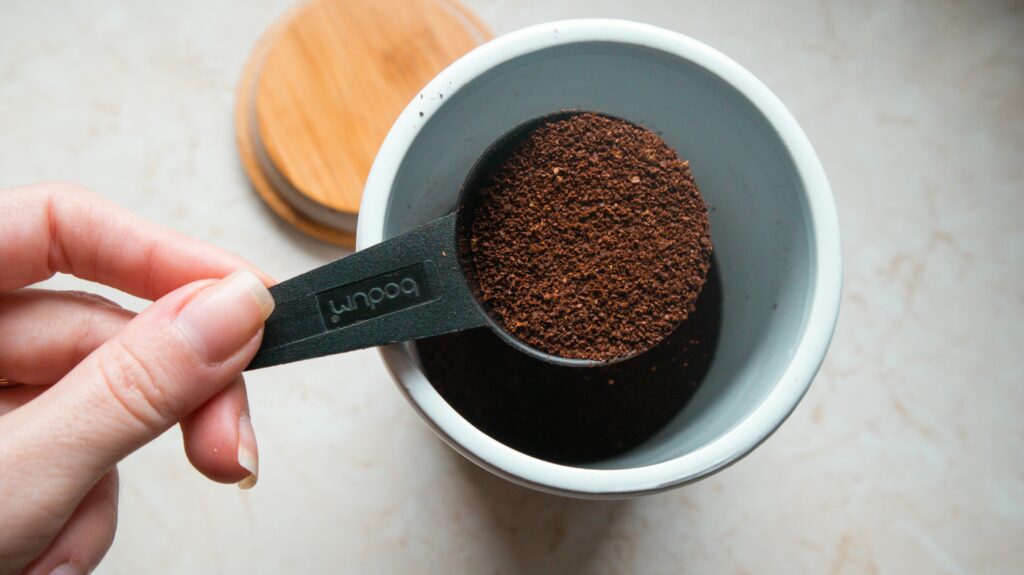I absolutely adore my morning coffee; it’s the fuel that kickstarts my day. However, I used to struggle with one pesky side effect—coffee breath. It’s like enjoying a delightful melody only to be followed by an off-key note. If you’ve ever wondered how to get rid of coffee breath, you’re not alone. Let’s dive into the science, effective strategies, and tips to help you enjoy your coffee without the unwelcome aftertaste.
Table of Contents
ToggleWhy Does Coffee Cause Bad Breath?
The Science Behind Coffee Breath
Think of your mouth as a bustling city where saliva is the sanitation department. Coffee acts like a temporary shutdown of that department, leading to a buildup of “trash” or odor-causing bacteria.
- Acidity of Coffee: Coffee is acidic, with a pH ranging from 4.85 to 5.10. This acidity creates an environment where bacteria thrive.
- Reduction of Saliva Production: Caffeine has a diuretic effect, leading to decreased saliva. Less saliva means fewer antibacterial agents to combat microbes.
Fact: According to the American Dental Association, saliva helps neutralize acids and wash away dead cells that accumulate on the tongue, gums, and cheeks.
Impact on Oral Health
- Bacterial Growth: The mouth contains over 700 species of bacteria. Coffee can disrupt the balance, allowing harmful bacteria to multiply.
- Staining: Coffee contains tannins that can stain teeth, contributing to a less appealing smile.

Table: Comparison of Coffee Types and Their Acidity Levels
| Coffee Type | Acidity Level (pH) | Bad Breath Potential |
|---|---|---|
| Light Roast | 4.7 | High |
| Dark Roast | 5.0 | Moderate |
| Cold Brew | 5.2 | Low |
| Decaf Coffee | 5.1 | Moderate |
| Green Coffee | 5.5 | Low |
If you’re interested in determining the best coffee suited to your specific preferences, take this Coffee Quiz. It’s a fun and interactive way to explore different coffee options.
“Good communication is as stimulating as black coffee, and just as hard to sleep after.”— Anne Morrow Lindbergh
Effective Strategies to Get Rid of Coffee Breath
1. Brushing and Flossing After Coffee
Why It Works: Removes residual coffee particles and plaque, preventing bacteria buildup.
My Experience: I started carrying a travel-sized toothbrush and floss in my bag. After finishing my coffee, a quick trip to the restroom for brushing made a world of difference.
Stat: A study in the Journal of Dental Hygiene found that people who brushed after meals had a 70% reduction in bad breath.
2. Staying Hydrated
Why It Works: Water acts like a natural mouthwash, flushing out bacteria and stimulating saliva production.
My Experience: For every cup of coffee, I drink a glass of water. It’s a simple habit that keeps my mouth refreshed.
Tip: Add a slice of lemon to your water for added freshness and saliva stimulation.
3. Using a Tongue Scraper
Why It Works: The tongue harbors up to 50% of oral bacteria.
My Experience: Using a tongue scraper felt strange at first, but I quickly noticed less morning breath.
How-To:
- Stick out your tongue.
- Place the scraper at the back.
- Gently pull forward.
- Rinse and repeat 2-3 times.
4. Chewing Sugar-Free Gum
Why It Works: Stimulates saliva production and masks odors.
My Experience: I keep a pack of xylitol-sweetened gum in my pocket. It’s a quick fix when brushing isn’t an option.
Science Explain: Xylitol reduces bacteria levels by making it harder for bacteria to stick to the teeth.
5. Consuming Breath-Freshening Foods
Why It Works: Certain foods naturally neutralize odors.
Foods That Help:
- Apples: Act like natural toothbrushes due to their fibrous texture.
- Parsley and Mint: Contain chlorophyll, a natural deodorizer.
- Yogurt: Probiotics reduce odor-causing bacteria.
My Experience: Snacking on an apple after coffee not only freshens my breath but also satisfies mid-morning hunger.
6. Rinsing with Mouthwash
Why It Works: Antibacterial agents kill microbes responsible for bad breath.
My Experience: An alcohol-free mouthwash is gentler and doesn’t cause dry mouth.
Recommendation: Look for mouthwashes containing cetylpyridinium chloride (CPC) or chlorhexidine.
7. Choosing Less Acidic Coffee Options
Why It Works: Less acidity means fewer bacteria-friendly conditions.
Options:
- Cold Brew: Up to 67% less acidic than hot brew.
- Dark Roast: Generally less acidic than lighter roasts.
Explore low-acid coffee options
8. Avoiding Sugary Additives
Why It Works: Sugar feeds bacteria, exacerbating bad breath.
Alternatives:
- Natural Sweeteners: Stevia or monk fruit.
- Non-Dairy Milks: Almond or oat milk.
My Experience: Switching to almond milk and skipping sugar helped reduce both calories and coffee breath.
9. Regular Dental Check-Ups
Why It Works: Professional cleanings remove tartar and identify potential issues.
My Experience: My dentist provided personalized tips and discovered a small cavity I hadn’t noticed.
Fact: The Centers for Disease Control and Prevention reports that only 64% of adults visited the dentist in the past year.
10. Moderating Coffee Intake
Why It Works: Less coffee equals fewer opportunities for bad breath.
My Experience: Cutting back to one cup a day improved my breath and sleep quality.
For those who like to get precise about their coffee brewing process, check out this Coffee Brew Calculator to perfect your coffee-to-water ratio.

Table: Comparison of Remedies
| Remedy | Effectiveness | Convenience | Cost |
|---|---|---|---|
| Brushing and Flossing | High | Moderate | Low |
| Drinking Water | Moderate | High | Low |
| Tongue Scraper | High | Moderate | Low |
| Chewing Sugar-Free Gum | Moderate | High | Low |
| Eating Breath-Freshening Foods | Moderate | High | Low |
| Rinsing with Mouthwash | High | Moderate | Low |
| Less Acidic Coffee | Moderate | Moderate | Moderate |
| Avoiding Sugary Additives | High | High | Low |
| Regular Dental Check-Ups | High | Low | Moderate |
| Moderating Coffee Intake | High | Low | Low |
Additional Tips and Tricks
Natural Remedies
Oil Pulling
How It Works: Swishing oil reduces bacteria.
My Experience: I used coconut oil for 10 minutes daily. It left my mouth feeling cleaner.
Herbal Teas
Alternatives to Coffee:
- Peppermint Tea: Naturally freshens breath.
- Green Tea: Contains catechins that reduce bacteria.
Discover herbal teas as coffee alternatives
Maintaining Overall Oral Hygiene
- Replace Your Toothbrush: Every 3-4 months.
- Use Fluoride Toothpaste: Strengthens enamel.
- Electric Toothbrushes: More effective plaque removal.

Frequently Asked Questions : How To Get Rid Of Coffee Breath
Q1: How long does coffee breath last?
A: It can last up to three hours if not addressed. Oral hygiene practices can eliminate it sooner.
Q2: Does decaf coffee cause bad breath?
A: Yes, decaf still contains compounds that cause bad breath, though it may be less intense.
Q3: Can green coffee help?
A: Green coffee is less processed and may have fewer odor-causing compounds.
Learn about green coffee benefits
Q4: Are there mouthwashes specifically for coffee breath?
A: Some mouthwashes target sulfur compounds. Look for products with chlorine dioxide.
Conclusion
Figuring out how to get rid of coffee breath has been a transformative journey. By understanding the science and making simple lifestyle changes, I can enjoy my favorite brew without worry. Remember, fresh breath isn’t just about social confidence; it’s a sign of good oral health.
Analogy: Think of your mouth as a garden. Coffee can introduce weeds (bacteria), but with proper care (oral hygiene), you can keep it flourishing.
References: how to get rid of coffee breath
- American Dental Association: Oral Health Topics
- Journal of Dental Hygiene: Impact of Brushing on Oral Health
- Centers for Disease Control and Prevention: Oral Health Data
Final Thoughts
Bad breath shouldn’t stand between us and our love for coffee. By implementing these strategies on how to get rid of coffee breath, we can enjoy every sip with confidence. Feel free to explore more coffee-related tips and products at Coffee Beans.
Have your own tips on combating coffee breath? Share them in the comments below! Let’s brew a conversation together.













































